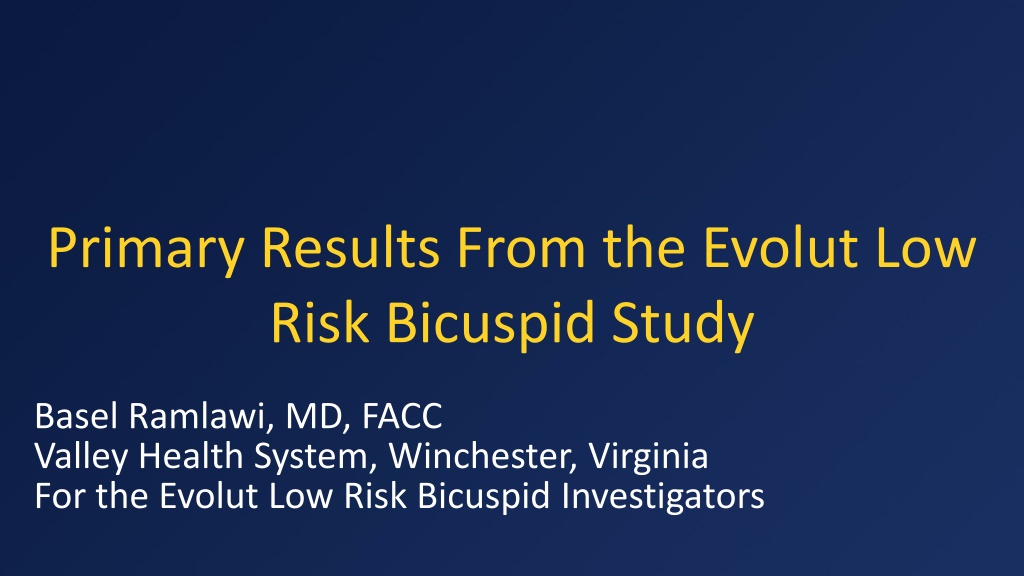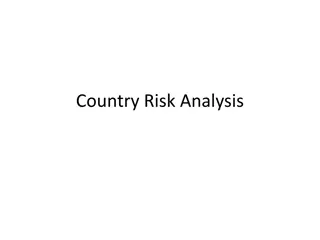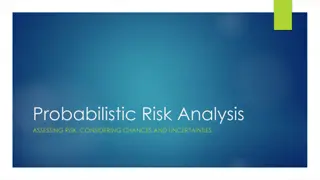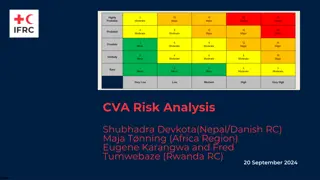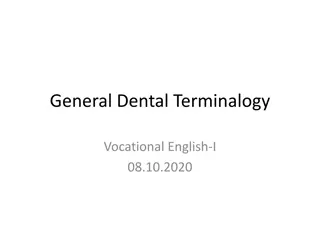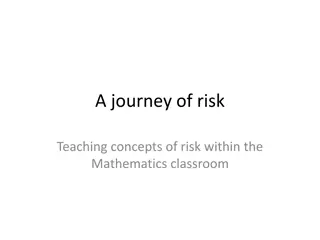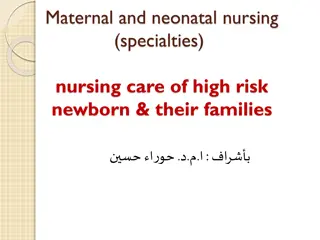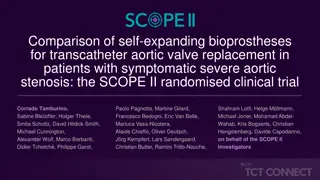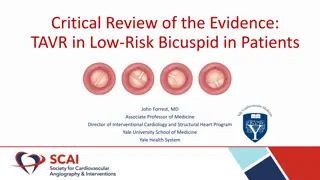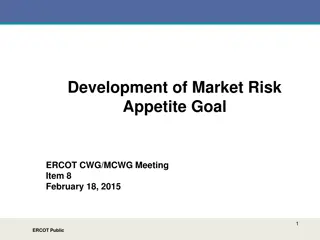Evolut Low Risk Bicuspid Study Analysis
This study aims to evaluate the safety and efficacy of transcatheter aortic valve replacement (TAVR) in low-risk patients with bicuspid aortic valve stenosis. TAVR with Evolut valves has shown promising results in tricuspid aortic stenosis, but data on bicuspid cases are lacking. The participating sites and key personnel involved in this research are highlighted, emphasizing the importance of expanding TAVR options for patients with bicuspid valve pathology.
Download Presentation

Please find below an Image/Link to download the presentation.
The content on the website is provided AS IS for your information and personal use only. It may not be sold, licensed, or shared on other websites without obtaining consent from the author.If you encounter any issues during the download, it is possible that the publisher has removed the file from their server.
You are allowed to download the files provided on this website for personal or commercial use, subject to the condition that they are used lawfully. All files are the property of their respective owners.
The content on the website is provided AS IS for your information and personal use only. It may not be sold, licensed, or shared on other websites without obtaining consent from the author.
E N D
Presentation Transcript
Primary Results From the Evolut Low Risk Bicuspid Study Basel Ramlawi, MD, FACC Valley Health System, Winchester, Virginia For the Evolut Low Risk Bicuspid Investigators
Disclosure Statement of Financial Interests Within the past 12 months, I have had a financial interest/arrangement or affiliation with the organization(s) listed below. Financial Relationship Company Research grants, consulting fees AtriCure, Liva Nova, Medtronic Medtronic personnel performed all statistical analyses and assisted with the graphical display of the data presented. 1
Background TAVR with Evolut supra-annular self-expanding valves has demonstrated excellent outcomes in tricuspid aortic stenosis and is currently approved in the US for patients across all risk classes. Patients with bicuspid aortic stenosis have been generally excluded from prior TAVR trials, due to concerns of: Asymmetric calcification, elliptical shape, potential incomplete valve expansion, procedural technical concerns, etc. Annular vs. supra-annular measurements There have been no prospective studies assessing TAVR in low risk patients with bicuspid aortic stenosis. 2
Objective To assess the safety and efficacy of TAVR in patients with bicuspid aortic valve stenosis and low surgical risk 3
Participating Sites University of Michigan Ann Arbor, MI Oregon Health & Science University Portland, OR Beth Israel Deaconess Mass General Boston, MA Abbott Northwestern Minneapolis, MN Spectrum Health Grand Rapids, MI Yale New Haven Hospital, New Haven, CT Case Medical Center Cleveland, OH Northwell Health, Manhasset, NY St. Francis Hospital, Roslyn, NY St. Lukes/Aurora Milwaukee, WI The Mount Sinai Medical Center New York, NY University Pittsburg Pinnacle Health Harrisburg, PA Mercy Medical Center Iowa Heart Des Moines, IA OhioHealth/Riverside Methodist Columbus, OH Valley Health Winchester, VA Los Robles Hospital Thousand Oaks, CA Abrazo Arizona Heart Hospital Phoenix, AZ Piedmont Heart Institute Atlanta, GA Scripps Memorial La Jolla, CA Baylor Heart & Vascular Dallas, TX Tallahassee Research Institute Tallahassee, FL Houston Methodist DeBakey Heart & Vascular Center Houston, TX Morton Plant Clearwater, FL Lee Memorial Health System Ft. Myers, FL 4
Study Administration Principal Investigators: John Forrest, Basel Ramlawi Executive Committee: John Forrest, Jeffrey Popma, Basel Ramlawi, Michael Reardon Screening Committee: G. Michael Deeb (Chair), John Forrest, Jeffrey Popma, Basel Ramlawi, Michael Reardon, Steven Yakubov Echo Core Laboratory: Jae Oh, Mayo Clinic, Rochester, MN Data & Safety Monitoring Board: David Faxon (Chair), William Holman, John Lopez, Scott Kasner, John Orav Clinical Events Committee: Cliff Berger, Scott Bortman, Manish Chauhan, Donald Cutlip, Torin Fitton, Eli Gelfand, David Grossman, Claudia Hochberg (Chair), Carey Kimmelstiel, Daniel Kramer, Megan Leary, Robert Rodriguez, Sanjay Samy, Jonathan Silver, Gregory Smaroff, David Thaler, Jonathan Waks, Sergio Waxman, David Weiss, Jeffrey Veluz Sponsor: Medtronic, Minneapolis, MN 5 5
Study Methods Multicenter, prospective, interventional, single-arm study Baseline MSCT to confirm bicuspid morphology Patient eligibility reviewed by local Heart Team & Screening Committee Implant Procedure Annular sizing recommended for all patients Pre-TAVR balloon valvuloplasty strongly encouraged CEC adjudicated all endpoint-related adverse events Hemodynamics centrally assessed by echocardiographic core laboratory Patient follow-up planned for 10 years 6
Valves Studied Evolut R Valve [43%] Evolut PRO Valve [57%] 23, 26, 29 and 34 mm 23, 26 and 29 mm 7
Key Inclusion Criteria Bicuspid aortic valve anatomy confirmed by MSCT Symptomatic and asymptomatic severe AS1 A predicted risk of 30-day mortality <3% per multidisciplinary local Heart Team assessment 1Nishimura RA, et al. Circulation. 2014;129:2440-92. 8
Key Exclusion Criteria Age < 60 years Multivessel coronary artery disease (SYNTAX score >22) Ascending aorta diameter > 4.5 cm Aortopathy requiring surgical intervention Prohibitive LVOT calcification Trileaflet aortic valve on MSCT Anatomic dimensions outside recommended range SOV ( 25 mm) Annulus (18 to 30 mm) 9
Study Endpoints Primary Safety Endpoint All-cause mortality or disabling stroke at 30 days Primary Efficacy Endpoint Device Success Absence of procedural mortality AND Correct position of 1 valve in the proper anatomical location AND Absence of > mild aortic valve regurgitation 10 10
Patient Flow Excluded (n=72): - Exclusion criteria met (n=60) - Patient withdrawal (n=2) - Physician withdrawal (n=3) - Other (n=7) Patients screened (n=222) Attempted procedure (n=150) Aborted procedure (n=1) Implanted TAV (n=149) Conversion to surgery (n=1) Discharged with TAV (n=148) Death (n=1) 30-Day follow-up (n=147) 11 11
Reasons for Study Exclusion Reason Anatomical reasons Tricuspid aortic valve Aortic root dimensions: annular perimeter/diameter Mean ascending aorta > 45 mm Aortic root dimensions: SOV diameter Prohibitive LVOT calcification Risk of mortality outside protocol (> low risk) Contraindication for placement of bioprosthetic valve Allergies Did not meet severe AS criteria Age less than 60 years Other condition excluding from study per investigator N = 60 46 17 15 9 4 1 5 3 2 2 1 1 12
Baseline Clinical Characteristics Mean SD or no. (%) N = 150 Age, years 70.3 5.5 Male sex 78 (52.0) Body surface area, m2 1.9 0.2 STS PROM, % 1.4 0.6 NYHA Class III or IV 41 (27.3) Peripheral arterial disease 14 (9.3) Chronic lung disease/ COPD 26 (17.7) Prior coronary artery bypass grafting 2 (1.3) Mean gradient, mm Hg 48.0 16.1 Aortic valve area, cm2 0.8 0.2 14
Bicuspid Valve Sievers Subtypes Type I Left-Right N = 107 Type I Right-Non N=27 Type I Non-Left N= 2 Type 0 N = 14 9.3% 71.3% 18.0% 1.3% No patients had Sievers Type 2. 15
Procedural Characteristics No. (%) N = 150 No. (%) N = 150 Resheath or recapture 49 (32.9) General anesthesia 95 (63.3) Implanted valve size Iliofemoral access 147 (98.7) 23 mm 0 (0.0) Embolic protection 45 (30.0) 26 mm 32 (21.5) Pre-TAVR balloon dilation 137 (91.3) 29 mm Post-TAVR balloon dilation 55 (36.9) 55 (36.9) 34 mm* > 1 valve implanted 62 (41.6) 5 (3.3) *Only Evolut R 16
Primary Endpoint 10% Death or Disabling Stroke 8% 6% 4% 2% 1.3% 0% 0 5 10 15 20 25 30 Days Post Procedure No. at Risk 150 143 17
Outcomes at 30 Days No. of patients (KM estimates as %) N = 150 All-cause mortality or disabling stroke 2 (1.3) All-cause mortality 1 (0.7) Disabling stroke 1 (0.7) Non-disabling stroke 5 (3.3) Major vascular complication 2 (1.3) Aortic dissection 0 (0.0) Annular rupture 0 (0.0) Permanent pacemaker* 22 (14.7) Permanent pacemaker 22 (15.1) Coronary artery obstruction 1 (0.7) *Includes patients with baseline permanent pacemaker. Excludes patients with baseline permanent pacemaker. 18
Additional Outcomes at 30 Days No. of patients (%) Device success 141/148 (95.3) Patient-prosthesis mismatch* None 115 (87.1) Moderate 10 (7.6) Severe 7 (5.3) Mean gradient > 20 mm Hg 2/146 (1.4) *N=132 patients per VARC-2. 19
Valve Hemodynamics Effective Orifice Area, cm2 3.0 60.0 AV Mean Gradient, mm Hg 48.0 2.5 50.0 2.2 2.3 2.0 40.0 1.5 30.0 EOA Mean Gradient 1.0 20.0 0.8 0.5 10.0 9.0 7.6 0.0 0.0 Baseline Post Procedure 30 Days No. of Echos EOA 135 124 132 AVG 148 146 146 20
Valve Hemodynamics by Subtypes 3.0 60.0 AV Mean Gradient, mm Hg 48.4 2.3 Effective Orifice Area, cm2 2.5 50.0 2.3 48.0 2.0 40.0 2.2 2.1 1.5 30.0 1.0 20.0 0.8 9.1 7.6 0.5 10.0 0.7 8.8 7.2 0.0 0.0 Baseline Post Procedure 30 Days Type 0 Type 1 21 21
Total Aortic Valve Regurgitation at 30 Days 100% 15.4 Severe Patients w/Echo (%) 80% 40.4 42.9 Moderate 60% 84.6 40% Mild 59.6 57.1 20% None/Trace 0% All Patients N = 146 Type 0 N = 13 Type I N = 133 Implant population. Core lab assessments. 22
New York Heart Association 0.7 2.7 100% Proportion of Patients (%) 26.7 21.9 NYHA IV 80% NYHA III 60% 40% 75.3 70.7 NYHA II 20% NYHA I 2.0 N=150 0% N=146 Baseline 30 Days 23
Discussion Study performed at high volume expert centers Non-randomized study design Standardized implant technique Annular sizing Pre-TAVR balloon dilation Rigorous adherence to patient selection parameters 24
Summary TAVR with Evolut supra-annular self-expanding valve in low-risk bicuspid patients achieved excellent early results: Annular sizing achieved 95.3% device success Low mortality and stroke at 30 days (1.3%) Low rates of PVL (no moderate/severe) Consistent hemodynamics across Sievers Classification Patients will be followed for 10 years 25
Clinical Implications In low-risk AS patients with bicuspid morphology, TAVR with the Evolut platform is a safe and effective treatment option. The choice between TAVR and surgery should be based on a multidisciplinary heart team discussion that includes anatomic, clinical and patient social factors. 26
